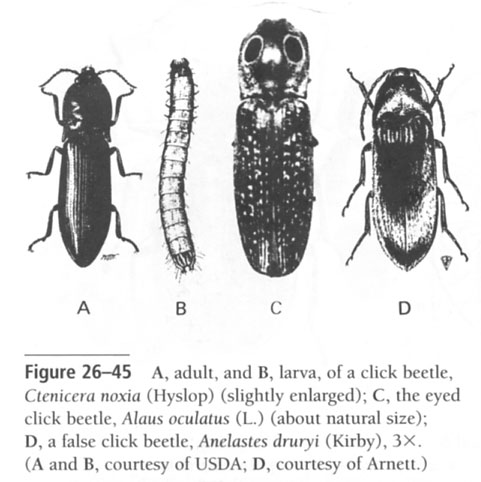|
Couplet 84
84a: Posterior angle of prothorax acute, embracing elytral humeri (Figure 26-45A,C,D); hind tarsus with 5 tarsomeres; 3 or more ventrites connate; prothorax dorsoventrally mobile relative to mesothorax; intercoxal process of prosternum long, notched dorsally, received in deep mid-coxal cavity as a clicking mechanism; if clicking mechanism cannot be seen because visible portion of intercoxal process is flat ventrally and received tightly in deeply emarginate mesosternum, then sternopleural suture or hypomeron grooved to receive antenna
84b: Posterior angles of prothorax not acute and embracing elytral humeri, or rarely somewhat acute and weakly embracing humeri; hind tarsus with 5 or 4 tarsomeres; ventrites variable; prosternal process variable, but if large and received in deeply emarginate mesosternum, apex of prosternal process not notched dorsally or capable of clicking; if large prosternal process received tightly in deep mid-coxal cavity and underside of prothorax grooved to receive antenna, then hind tarsus with 4 tarsomeres
|
 |